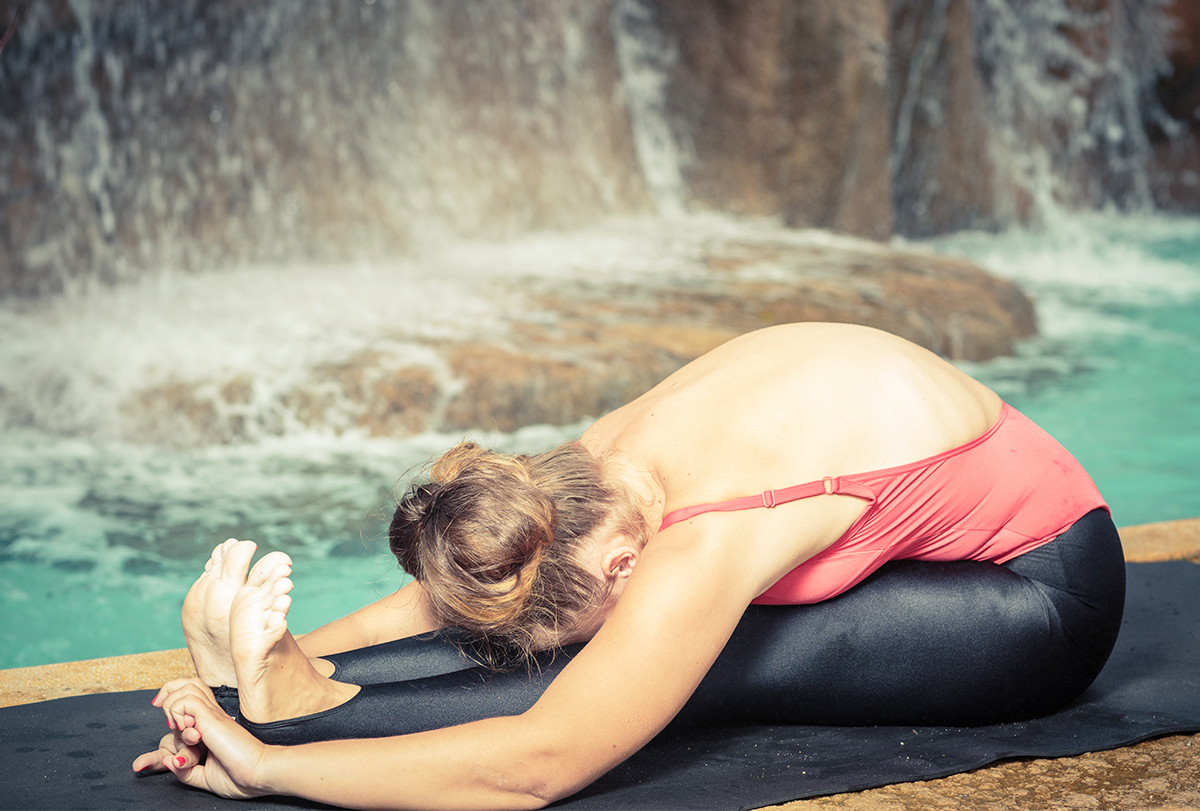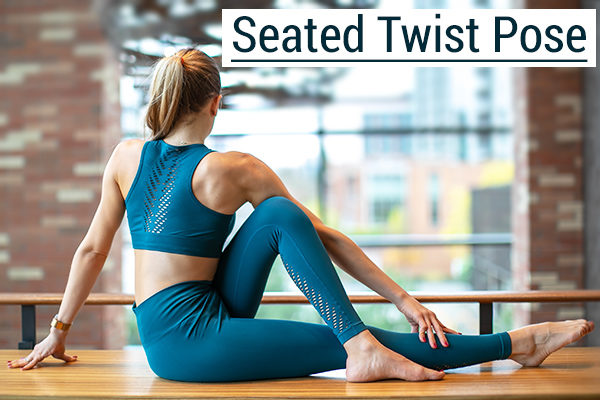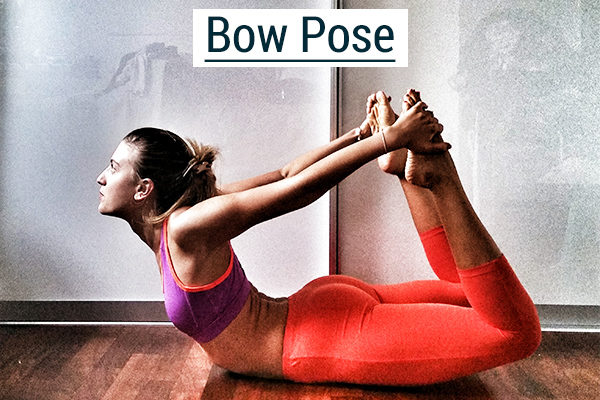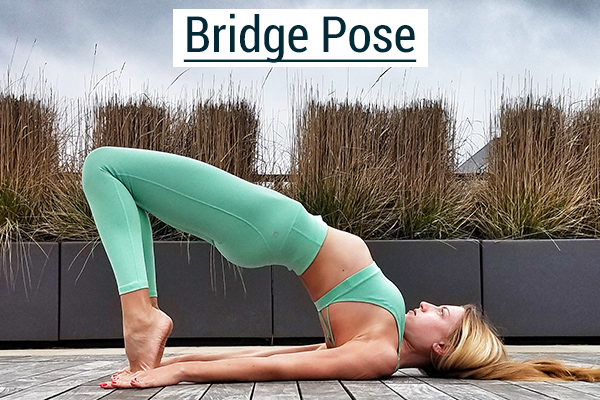In this article:
Yoga is not just a physical activity that improves your flexibility and mobility. It can also boost your immune system, reduce stress, and help balance your hormones. It can even stimulate and improve your digestion.

Here are the best yoga poses that will help you break down food more efficiently, increase nutrient absorption, and speed up your metabolism.
1. Downward-Facing Dog (Adho Mukha Svanasana)
All inversions are great when it comes to stimulating your digestive system, but the downward-facing dog is one of the rare ones that do not put too much pressure on your neck and shoulders. Hence, it is a great way to wake up your inner organs.
How to do the downward-facing dog:

- Start in a child’s pose and stretch your arms long in front of you, feeling your fingers grip your mat and press firmly into the floor.
- Tuck your toes and lift your hips up, stretching your legs.
- You will feel your weight shifting slightly toward your hands, so use them to push yourself away from the floor, elongating and stretching your whole spine.
- Keep sending your hips up and back, and activate your abs by pulling your belly button up toward your spine.
- You can choose to bend one knee and then the other (“walking your dog”), stretching out your hips and legs.
- As you start to feel your lower back extend and stretch, you are also massaging your abdomen, stimulating your digestion.
The inverted position reorients the colon and intestines; such effect encourages bowel movements and helps with the overall flow. You can stay in the position for as long as you want, but 3–5 breaths are usually recommended.
2. Seated Forward Fold (Paschimottanasana)
Forward folds are incredibly powerful poses that activate your entire body, even if they only look like you are resting on your legs.
They also stimulate your digestion because of the big compression happening in your front body, signaling your brain to send fresh oxygen and nutrients to help you push everything the right way.
How to do the seated forward fold:

- Sit in a comfortable position, legs straight in front of you, spine elongated.
- Inhale and raise your arms over your head, shoulders away from your ears.
- Keeping your arms where they are, slowly start reaching forward.
- Avoid grabbing your toes until the very last moment and only if your spine stays straight and your chest opens while you do it. If you feel yourself curving your spine sooner, stay there and place your palms right beside your legs, pushing them firmly into your mat.
- Inhales elongate the spine; exhales bring you deeper into your fold. Feel the constant action and the way the blood circulates in your body, doing the hard work of building and repairing.
- After 5–10 deep breaths, come back out the same way you came in and reset in the seated position.
No matter your level of flexibility, the idea is the same: push from your sitting bones and “grow” tall from your seat, elongating the front body as much as the back, creating space for your whole torso to eventually, one day, compress on your legs.
3. Seated Twist (Marichyasana III)
Twists are amazing for the digestive system as they literally twist everything up and then release them, bringing in fresh blood with an abundance of oxygen and nutrients.
Think of your spine as a rag full of water that needs to be squeezed out: that is how toxins and all the negativity gets released from your body. Seated twists are great because you can control them better than the standing version, and you can get deeper than in the laying version.
How to do the seated twist:

- Sit in a comfortable position, legs straight in front of you.
- Bend one knee and keep the other leg extended.
- Grab your knee with the opposite arm and place the other one behind you, palm firmly pressed into the floor behind your seat.
- Inhale and feel your spine straighten up, from your sitting bones all the way through the crown of your head.
- Exhale and slowly twist to the back, trying to look back and stretch out your neck as well.
- Inhales bring you taller; exhales get you deeper into the twist.
- Try not to collapse on your back hand. Instead, use it as leverage to push yourself away from the floor and to straighten out your spine even more.
- Stay for 5–10 long inhales and exhales before slowly exiting the pose by bringing your head back first, relaxing your knee, and switching sides.
4. Bow Pose (Dhanurasana)
By putting literal pressure on your abdomen, the bow pose stimulates your digestive system very efficiently. It also stretches out your front side body and compresses the back, creating space for your organs and allowing them to optimize their functions.
How to do the bow pose:

- Lie on the floor belly down, and place your forehead on the mat, preparing yourself for the pose.
- Bend your knees and grab your feet right under your ankles.
- Bring your knees as close to one another as possible, and then kick into your hands and use the kick to create the lift.
- Elevate your knees and thighs from the floor and shift your weight forward into the soft part of your belly.
- Keep on kicking and reaching, gazing up if it feels comfortable for your neck.
- Do not stop kicking and reaching, lifting higher with every inhale. Your breath will be shallow here, but whatever you do, do not hold your breath. Instead, use tiny sips of air to fuel your yoga pose.
- After 3–5 breath cycles, slowly release your grip and come back to a neutral laying pose, letting go and feeling the benefits of this powerful backbend.
5. Bridge Pose (Setu Bandha Sarvangasana)
The bridge pose is one of the most versatile in the yoga sequence, as it can be everything from energizing and metabolism-boosting to restorative and relaxing. It stretches out your back and abdomen at the same time as you are using your arms and legs to push deeper in the pose and create the lift.
How to do the bridge pose:

- Starting in a supine position, bend your knees and place your feet hip-width apart as close to your sitting bones as possible.
- Firmly press your feet into the ground. Make a mental note to pay attention to your knees and do not allow them to open up or cave in.
- Stretch your arms beside you, palms facing down.
- On your next inhale, lift your hips up towards the sky while digging your heels and palms into the floor.
- Try to relax your glutes as much as possible to avoid compressing your lower back, and feel your thighs do the work instead.
- You can choose to clasp your hands below your pelvis and interlace the fingers, extending through the arms to help you stay on the tops of your shoulders.
- Push your hands into your mat and feel the lift in your chest, bringing it closer to your chin.
- Relax your neck and try to abstain from turning it around, so you avoid pinching any nerves. Instead, work on elongating your spine as much as possible.
- You can stay here and use your breath to go deeper and lift higher with every inhale, or you can place your hands underneath your sacrum to support it and let it rest in your palms.
- After 3–5 breath cycles, slowly remove your hands from underneath your body and bring your pelvis gently back into the floor.
Hug your knees in for a counterpose and gently sway left to right to massage your spine and abdomen furthermore.
Final Word
It is easy to ignore your digestive and mental health due to a busy lifestyle. However, taking some time daily to do some simple yoga poses can greatly benefit your health.
Deep-breathing exercises help increase oxygen supply and stimulate muscle movement of the intestines. Try implementing the above poses every time you feel a bit bloated or your digestion needs that extra push.
- Was this article helpful?
- YES, THANKS!NOT REALLY


